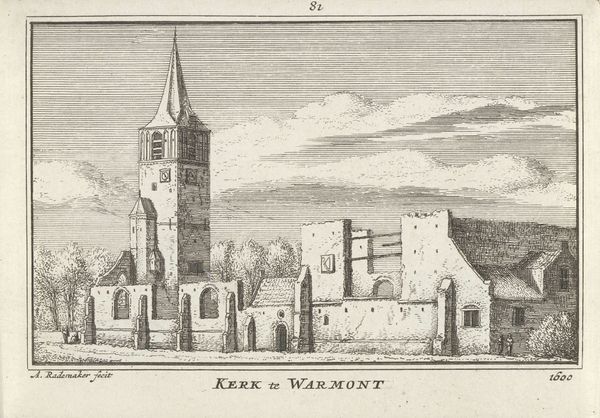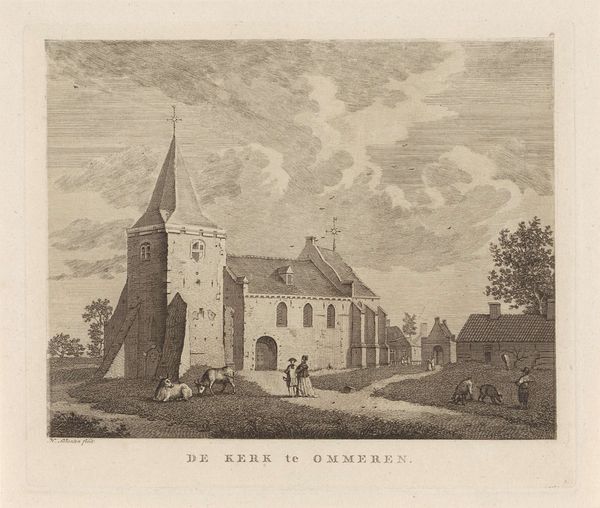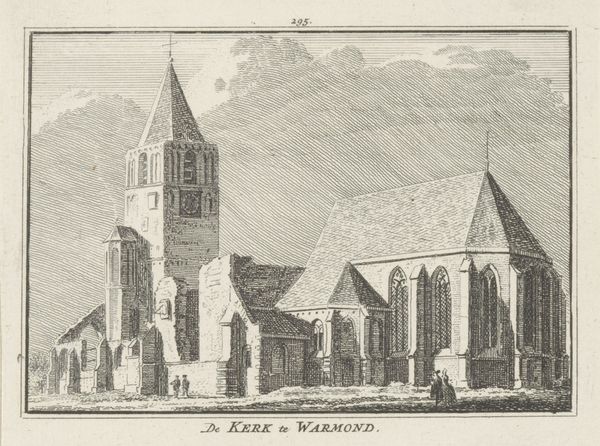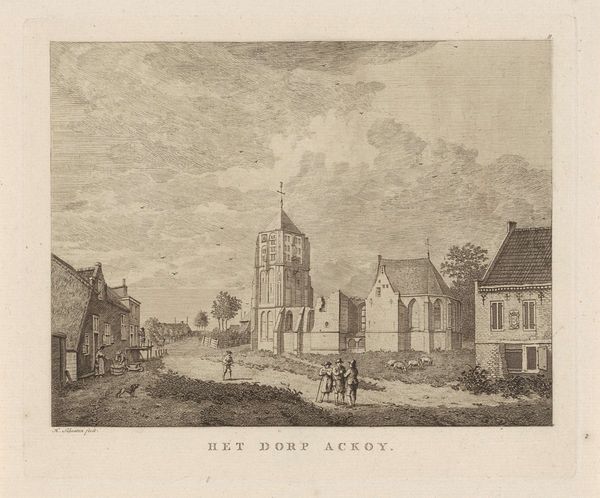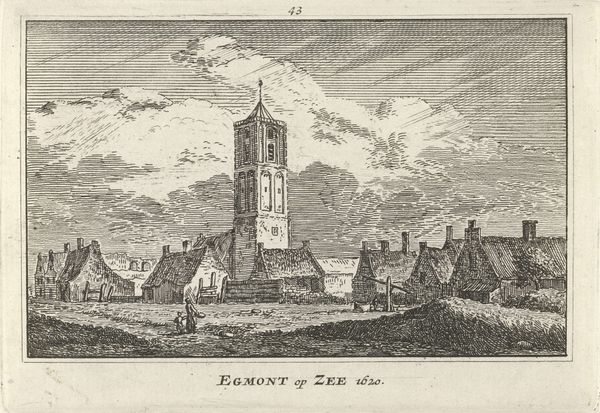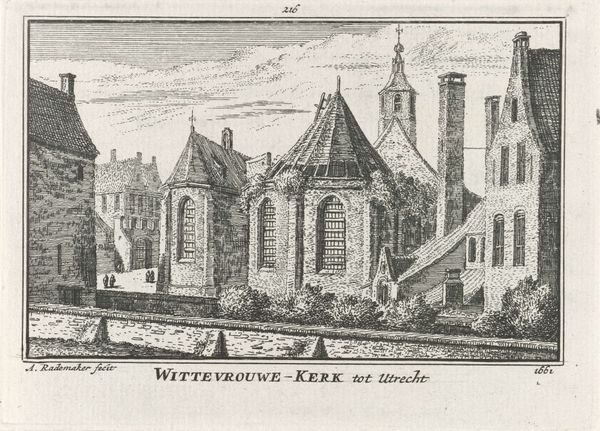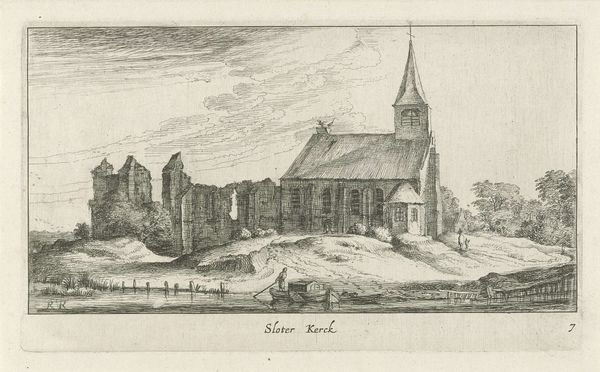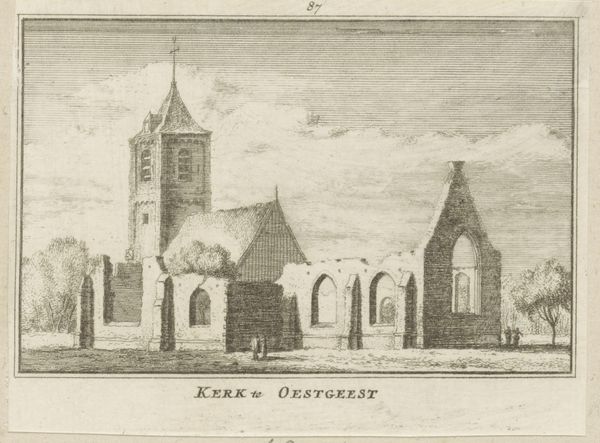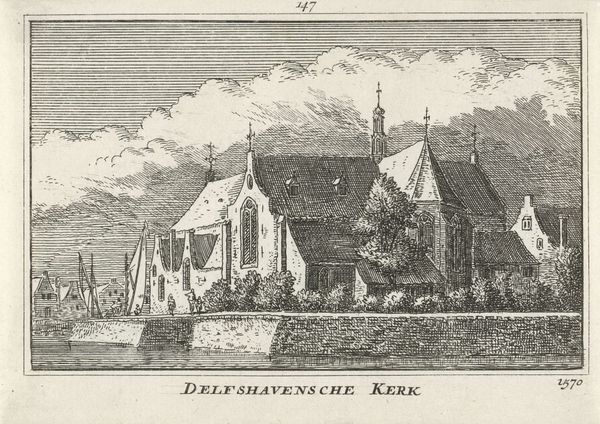
drawing, print, engraving, architecture
#
drawing
#
baroque
#
dutch-golden-age
# print
#
landscape
#
line
#
engraving
#
architecture
#
realism
Dimensions: height 80 mm, width 115 mm
Copyright: Rijks Museum: Open Domain
Curator: Welcome. Before us is a fascinating print entitled "Gezicht op de kerk te Warmond," or "View of the Church at Warmond." Abraham Rademaker created this Dutch Golden Age landscape between 1727 and 1733, using engraving and drawing techniques. Editor: My initial impression is one of starkness and decline. The prominent church, while grand, seems almost skeletal against the muted sky. The landscape itself is sparse, drawing attention to the building's structural details and suggesting a solemn mood. Curator: It's interesting that you use the word 'skeletal.' Notice how Rademaker’s choice of engraving allows us to clearly examine the structure: we can easily read how it was constructed from the bottom up. Also observe the labor and resources embedded within. Editor: Yes, and within a religious context, a skeletal appearance could evoke ideas of mortality and the ephemeral nature of earthly structures in contrast with enduring faith. It leads one to think about the congregation and their beliefs centered around the church in that small Dutch community. The church tower also symbolizes a reaching towards heaven. Curator: This church wasn’t immune to historical circumstances. Notice the signs of decay and even outright demolition that suggest shifts in social values impacting patronage and the maintenance of these grand religious spaces, including materials sourced, wages for labour. We tend to romanticize the Dutch Golden Age, but engravings like this offer complex commentaries on how historical forces such as changes in societal structure affect even such buildings. Editor: Rademaker subtly inserts humanity within the scene via the figures and animals dotting the landscape, a way of showing its function and position within the surrounding community. But it is curious, that the buildings nearby appear empty. A scene of abandonment. Curator: Abandonment is such a strong concept and so deeply connected to changing materials, because labor shifts from the creation of such objects to the possible re-use and reconstruction, we are only looking at the scene for a few seconds. The building probably fell to decay as the cost of labor became prohibitive. Editor: That perspective reveals how this print encapsulates a particular cultural memory and its evolving role through shifting symbols in architectural structures. Curator: By analyzing the materials and labour involved in its making we can grasp history with greater fidelity. Editor: Considering the religious and symbolic context illuminates the psychological undercurrents driving cultural continuity or change. Curator: Indeed. Together, these ways of reading unlock a richer understanding. Editor: Absolutely, it is a captivating perspective!
Comments
No comments
Be the first to comment and join the conversation on the ultimate creative platform.

